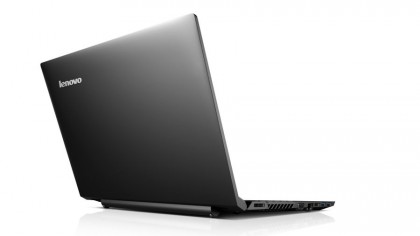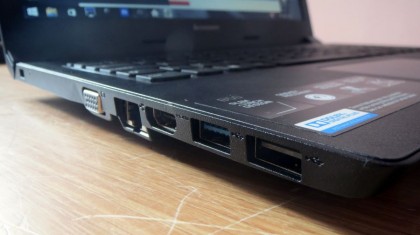Why you can trust TechRadar
- PCMark 8 Home: 1,216
- PCMark 8 Home battery: 3 hours 57 minutes
- 3DMark Ice Storm: 15,417
- 3DMark Cloud Gate: 1,205
- 3DMark Fire Strike: wouldn't run
- Cinebench R11.5: CPU: 0.68; Graphics: 6.12fps
- Cinebench R15: CPU: 35cb; Graphics: 5.34fps
The low-end Celeron processor won't win any speed awards. In PC Mark 8's Home benchmark it scored 1,216 points, which is slower than the two AMD-powered systems. That disappointing benchmark result carried over to real-world use, where we could only complete basic tasks – more intensive software saw the Lenovo grind to a halt. Loading times were poor, with software struggling to boot quickly in desktop mode and the Start screen pausing before it appeared.

The sluggish performance continued in Cinebench tests. In version 11.5 of the application, the Lenovo's CPU score of 0.68 was significantly slower than the 1.13 scored by the HP Pavilion TouchSmart 15-n070sa and the 1.97 of the Toshiba Satellite C50.
This is no gaming system, either. In 3DMark's easiest benchmark, Ice Storm, the Celeron's Intel HD Graphics core stumbled to 15,417 points – almost 7,000 behind the HP, and less than half the speed of the Toshiba. The gap was maintained in the harder Cloud Gate benchmark, and the low-end Lenovo couldn't complete the Fire Strike test. This machine will only handle old and basic games.

Poor display
The budget shows when the 1,366 x 768 non-touch screen is considered, too. The 207cd/m2 brightness level is low, so everything looks dim, and the black level of 0.63cd/m2 is just as bad – blacks just don't look deep. The 328:1 contrast ratio isn't able to match the superior Toshiba, and it means that there's a lack of depth and brightness across the entire range.
The average Delta E of 9.95 and colour temperature of 7,547K are poor. The former figure means that colours aren't accurate, and the latter means that images are hampered by colder tones.
The Lenovo's poor panel is only good enough for web browsing and basic work. Toshiba's laptop has a better screen thanks to improved brightness, contrast and colour accuracy.

The screen's lack of quality and resolution hamper its potential, and it's not helped by awful audio. No part of the range impresses; the top-end is tinny, and the mid-range lacks bite, and there's barely any bass. It doesn't help that songs and movies sound squashed together, too, with no depth.
Sign up to the TechRadar Pro newsletter to get all the top news, opinion, features and guidance your business needs to succeed!
The one saving grace came in battery benchmarks. The Lenovo lasted for 3 hours 57 minutes in PCMark 8's Home test with the screen at 100% brightness and High Performance mode activated. That's almost an hour ahead of the Toshiba and more than thirty minutes longer than the HP. The battery lasted for just over five hours with the screen dimmed and Power Saver mode activated, which is reasonable, but this remains a laptop that'll only manage a half-day away from a plug.
Mike has worked as a technology journalist for more than a decade and has written for most of the UK’s big technology titles alongside numerous global outlets. He loves PCs, laptops and any new hardware, and covers everything from the latest business trends to high-end gaming gear.
